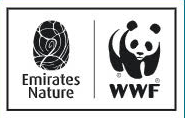Wael Al Awar, architect and UAE’s co-curator at the Biennale Architettura 2021, looks to the UAE’s natural landscapes and the region’s past to build a sustainable cement that absorbs CO2 instead of emitting it. This research will be shared with the global community at the National Pavilion of the UAE in the upcoming International Exhibitions of Art and Architecture in Venice
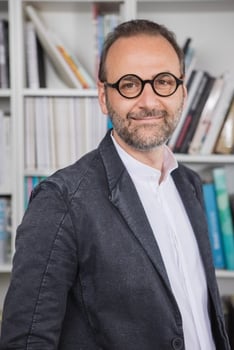 As we approach Earth Hour, on 27 March 2021, we shine the spotlight on the UAE’s Agents of Change – real people who are taking action to address climate change and nature loss.
As we approach Earth Hour, on 27 March 2021, we shine the spotlight on the UAE’s Agents of Change – real people who are taking action to address climate change and nature loss.
We spoke to Wael over Zoom about the problem with traditional cement, how the UAE’s sabkhas (salt flats) inspired a better solution and how we might one day see buildings as part of nature.
Emirates Nature-WWF: Why is cement so bad for the environment?
Wael Al Awar: Portland cement is a terrible material. It has a 1 to 1 ratio of emission to production: to produce one tonne of cement, you emit one tonne of carbon dioxide (CO2).
One tonne of cement is nothing. This is how much it takes to build a wall in a room. But it takes 40 years for one tree to absorb one tonne of CO2.
Today, Portland cement is responsible for 8% of global CO2 emissions. By 2050, our consumption is projected to double.
The way we currently occupy the planet and use its resources is extremely unsustainable. We need to rethink the way we do things.
Emirates Nature-WWF: How does your project speak up for nature?
Wael: As a practicing architect, I have a responsibility to acknowledge the problem and work towards the solution – a sustainable cement – as quickly as possible.
To find minerals that are sustainable, we looked into our geography and landscapes. We were fascinated by the sabkhas of the UAE – our salt flats.
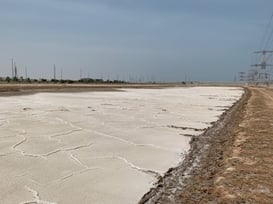
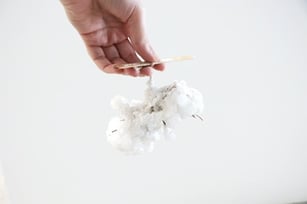
Image: National Pavilion UAE La Biennale di Venezia, photography by Dina Khatib
UAE is home to wide expanses of coastal and inland sabkhas that have developed over thousands of years. There is a perception of them being a barren environment, but this is not true. We know they absorb CO2, and they are a living environment that supports micro algae. They are tentatively listed as a UNESCO World Heritage Site, and should be seen as an asset or a resource.
Salt flats create crystals, similar to how cement binds salt and gravel through crystals. In our research we found many cities that are built from sabkha blocks, like the 800 year old town Siwa, on the border of Libya and Egypt.
When the modern age took over, the planet became unhealthy. The idea is to learn from our ancestors.
We propose extracting magnesium oxide (MgO), which is a salt, and using it to create a new cement mix. We will not extract this salt from the sabkhas which we want to protect, but from brine, the waste water that is created by industrial desalination.
In this way, we address another huge issue affecting our planet.
We need to desalinate water to live. But we want to keep the waste water out of the seas. The excess salt is bad for the corals, bad for biodiversity and reduces the ability of the sea to absorb CO2 and act as a carbon sink. In fact, with so much added salt, the seas begin to store more energy and increase temperatures. It’s a very bad thing.
By using salt from brine in the new, sabkha-inspired cement mix, we help save our seas and our climate.
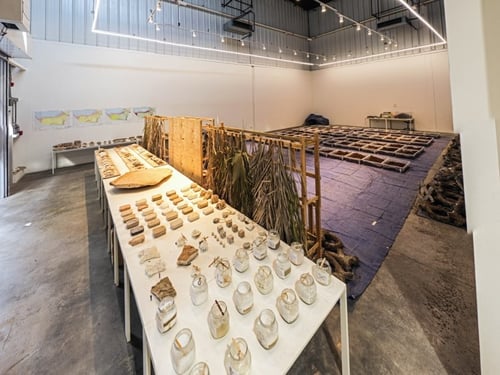
Wetland Lab at Alserkal Avenue, which is open to visitors. Image: National Pavilion UAE La Biennale di Venezia and waiwai. Photography by Sahil Abdul Latheef
Emirates Nature-WWF: You talk about protecting the UAE’s sabkhas. Why is this so important?
Wael: One square meter of sabkha can absorb more carbon than one square meter of rainforest. That’s how important sabkhas are to the UAE.
The sabkhas are the lungs of the country. They purify our air. We need to protect them and see them as a valuable resource.
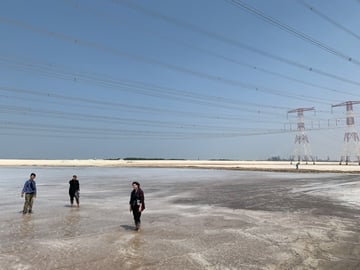 I started this research with an Instagram search to find photos of sabkhas. I did a hashtag search for sabkha in Arabic, but only saw 4x4s in the desert. An English search shows scientists looking at the geography and the landscape.
I started this research with an Instagram search to find photos of sabkhas. I did a hashtag search for sabkha in Arabic, but only saw 4x4s in the desert. An English search shows scientists looking at the geography and the landscape.
It made me realise how little we know about this valuable asset. So, we started hashtagging sabkha in Arabic and talking to schools and universities about this. Now, when you search sabkha in Arabic, you will see we’ve started to change the perception.
Emirates Nature-WWF: How far have you come in achieving sabkha cement?
Wael: This research is the National Pavilion of the UAE’s submission to the architecture exhibition at the Venice Biennale, which now takes places in May 2021.
We’ve worked on this project for one and a half years. The material is already ready.
We are building prototypes with the support of NYU Abu Dhabi, the American University of Sharjah and the University of Tokyo.
Emirates Nature-WWF: How durable is the material? Can the future Burj Khalifa be made of sabkha cement?
Wael: Yes of course, that’s why we are working with scientists in laboratories.
We have scientific support for this material. Structural tests have shown it is already 100% equivalent to Portland cement.
It is now about scaling up to achieve cost efficiency, so that we can introduce it to the market. Naturally, this needs years to become the perfect material to go.
Emirates Nature-WWF: What is your ultimate vision?
Wael: Our vision is to replace Portland cement.
With sabkha cement, every building becomes a living structure that absorbs CO2 from the environment. Our architecture becomes like trees, a part of nature.
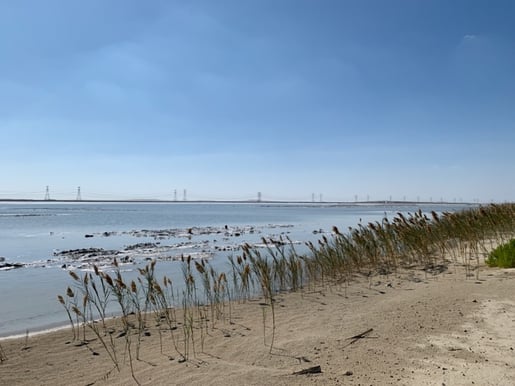
Emirates Nature-WWF: What would you say to someone who wants to make a difference this Earth Hour?
Wael:
Think of yourself as a human that is part of nature and not above nature.
We reached this point because we thought we were above it all, that we could do whatever we want. We can only grow if we coexist with nature. That’s the only way.
Visit the Wetland research lab at Alserkal Avenue to see samples of sabkhas, images and material experiments.
For more Agent of Change stories, visit EarthHour.ae or follow us on Instagram @EWS_WWF.






